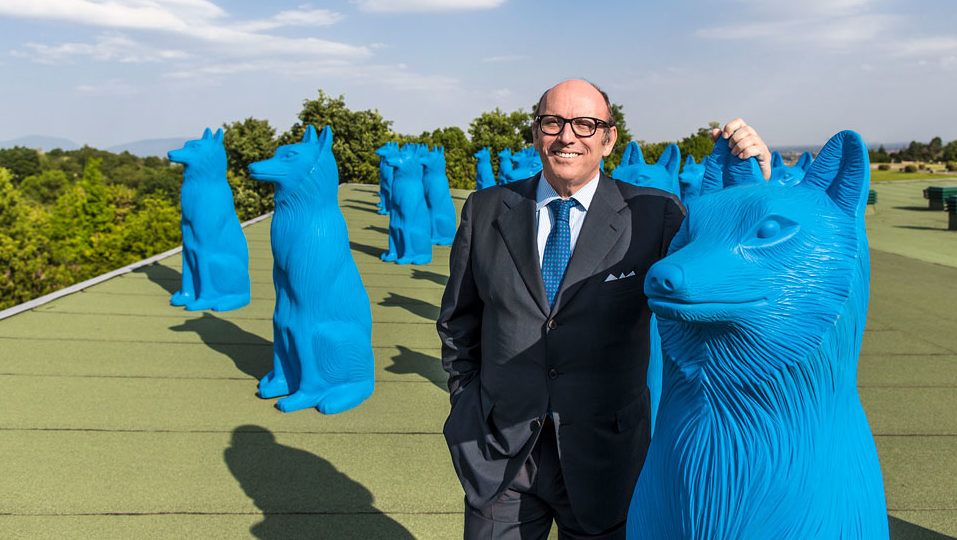Keay also tastes a range of the latest Franciacorta wines and recommends six that should be on your buying radar
On May 22, the Prosecco DOC Consorzio gave the much wanted green light to winemakers to make pink Prosecco, with up to 15% Pinot Nero added to the Glera. For producers of Italy’s most popular alcoholic drink, the announcement is akin to Christmas arriving early, with sales of pink Prosecco liable to top 30 million bottles within the next few years. British consumers, big fans of Prosecco and of still rose wine (both of which have had a good lockdown amidst the hot weather and the need for light alcoholic relief) will jump right in.
But whilst the Venetians are cheering, what of neighbouring Lombardy, where Franciacorta, Italy’s answer to Champagne, is produced but which was Ground Zero for Italy’s Covid-19 outbreak?
Until the virus hit, things were actually going pretty well.
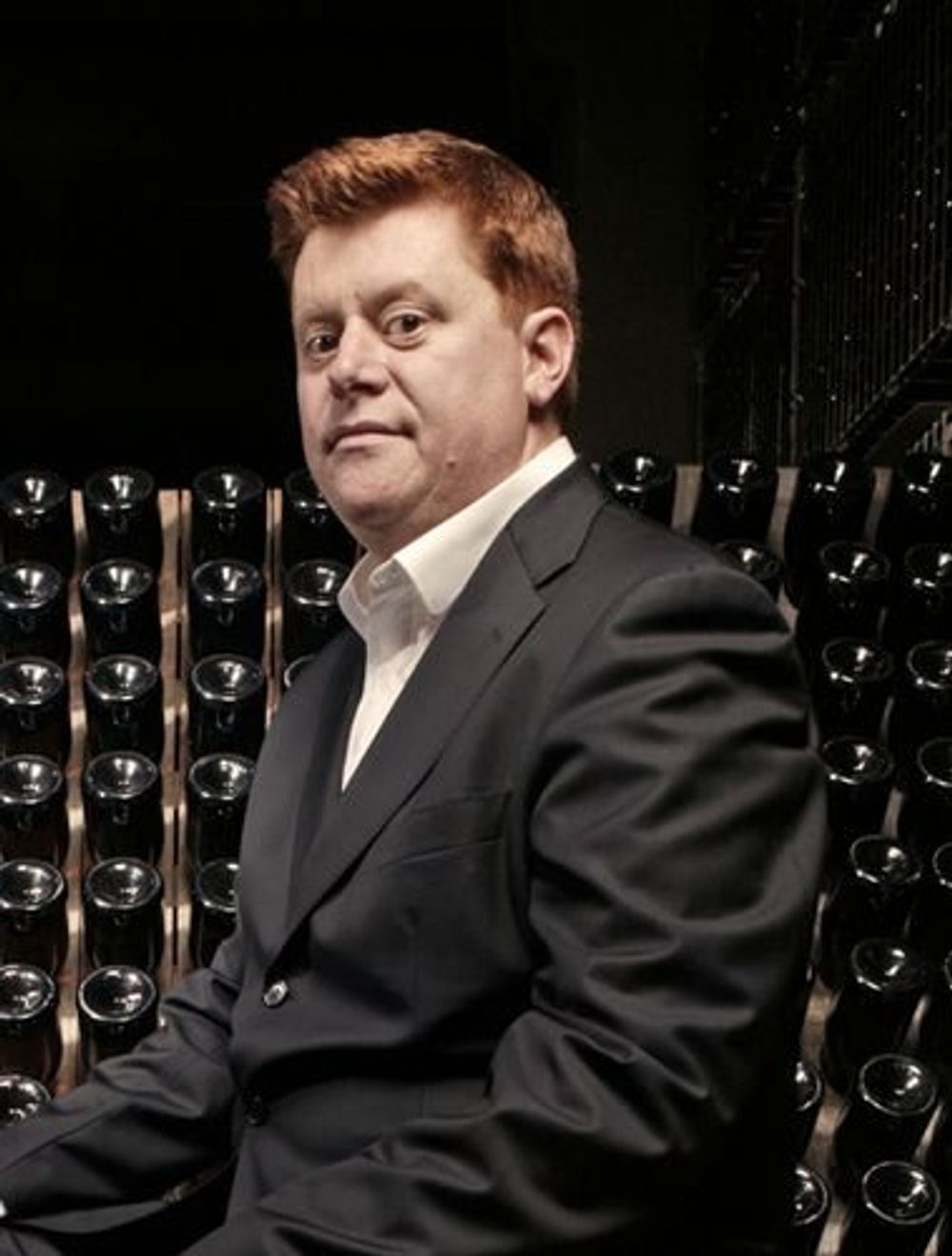
Consorzio President Silvano Bresciani, overseeing some of the strictest winemaking regulations in Italy
Comparing Franciacorta to Prosecco is, of course, quite unfair: volume is just a fraction and the process by which Franciacorta is made – and stored – bear no relation, with quality and therefore costs way above even producers in the premium Prosecco areas of Asolo and Conegliano Valdobbiadene. Regulations in the Franciacorta DOCG, incidentally, are amongst the strictest in Italy and have been tightened at least five times in the past 25 years.
Vinified in the metodo classico style using Chardonnay, Pinot Nero and Pinot Bianco grapes, vintage wines cannot be sold until three years after harvest, whilst even NV wines must wait 25 months, of which 18 are on the lees.
With 117 producers of varying sizes, including such big names as Ca Del Bosco and Bellavista, and smaller but highly respected ones like Ferghettina, with its distinctive Pyramid-shaped bottles, Franciacorta has worked hard to boost its global reputation. Although 80% of sales are domestic, and the bulk of this to the on-trade, the wine has been gaining traction in export markets like Japan, North America and the UK, where for some high end consumers its greater exclusivity make it preferable to Champagne. The very boutique nature of the product, with stellar presentation (some of the bottles feel like works of art) coupled with such innovations as Saten, a Chardonnay-only food friendly wine first introduced by Bellavista with lower bottle pressure enabling a less fizzy wine, have driven the region forward, with the Consorzio this year celebrating its 30thbirthday.

At least nature is being kind – early bud break and healthy vines in Lombardy
Consorzio President Silvano Brescianini says it has been a rewarding journey.
“In 1990 we had a small production and reputation, today we are leaders in quality and price, moreover exports have increased by double figures every year with an increase in value and reputation. For the future the key is consistency with what is promised in terms of sustainability and strictness in production because the area is small,” he says, adding that the last few years have seen an increasing focus on sustainability with grass, herbs and flowers now typically found in vineyards, and many moving towards organic and biodynamic methods.
However producers now face their biggest challenge grappling with the legacy of the invisible enemy that is Covid-19. To say that Franciacorta – located to the south of Lake Iseo, east of Bergamo – has been badly hit is an understatement. Over half Italy’s 33,000 Covid-19 deaths were here, with the first deaths in February occurring via transmissions fuelled by Lombardy’s close economic ties to China. In an early echo of the UK government’s own chaotic virus response, Lombardy’s agony was made worse by the slow lockdown and general incompetence of Lombardy’s populist far right League government.
Bergamo’s main local daily newspaper in mid March typically carried ten pages of obituaries in place of the usual one.
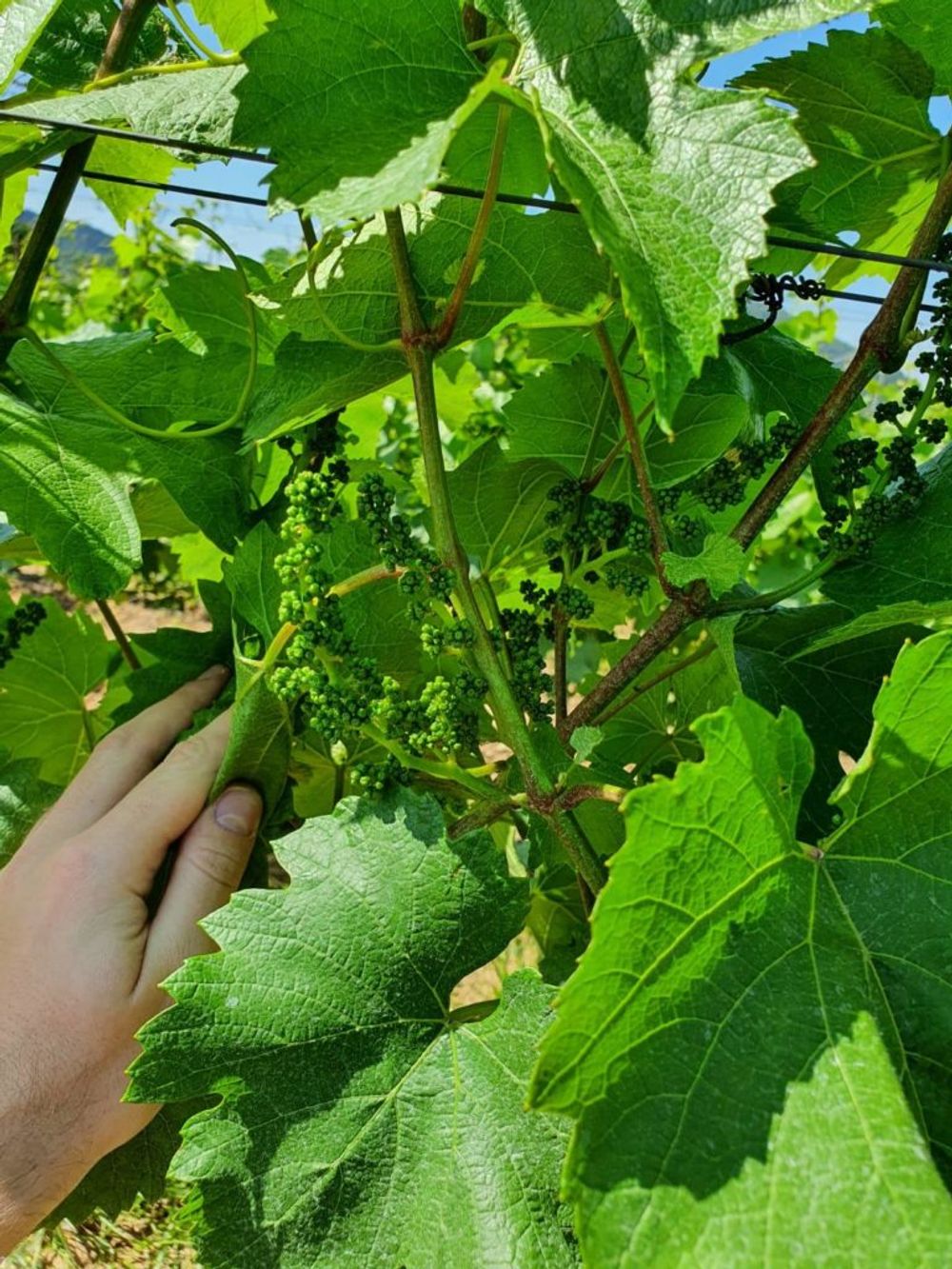
The fruit setting is one sign of life returning to normal
As well as the personal loss many winemakers have had to endure there have been business ones with the loss of most domestic sales, as restaurants stayed closed for the best part of three months and producers had to store big quantities of unsold wine. And there was something else: like Champagne, Franciacorta is a luxury product that consumers tend to drink when there is something to celebrate. In early 2020 there was precious little, as Laura Gatti of Ferghettina (imported here by Boutinot) admits.
“The area where the winery is based is one of the worst for the number of victims and people infected by the virus. We immediately started to follow a strict lockdown. But nature can’t stop, and we’ve continued to do our jobs, following all the safety rules. The only aspect that has stopped is sales,” she says, adding that in the winery all wear masks and social distance by at least two metres.
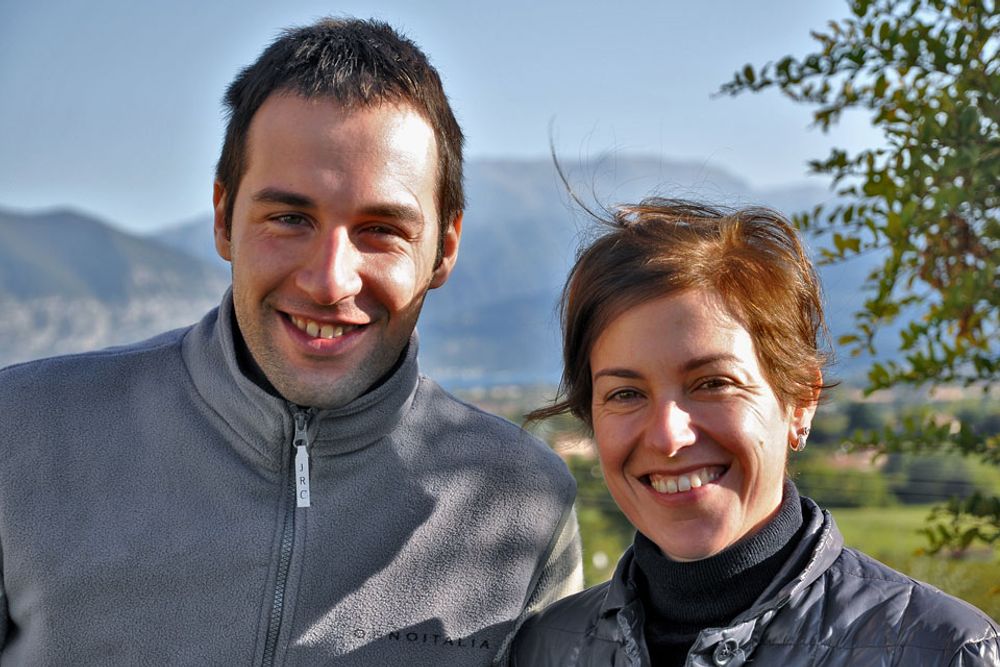
Matteo and Laura Gatti, Ferghettina
So far the climate has been kind, with early flowering – even if Mother Nature has been cruel in other ways – but Franciacorta’s tough quality rules mean that when the harvest comes the grapes must be hand-picked. With everything up in the air, there is no guarantee that the normal work-crews – who come from Romania and other eastern countries – will be on hand as normal, and there are logistical questions as to how they can pick and social distance at the same time.
“We have to ensure safe working conditions for them. At the moment there’s no real plan, but everybody is trying to ensure that we can work the harvest in the best way possible for both people and grape,” she says.
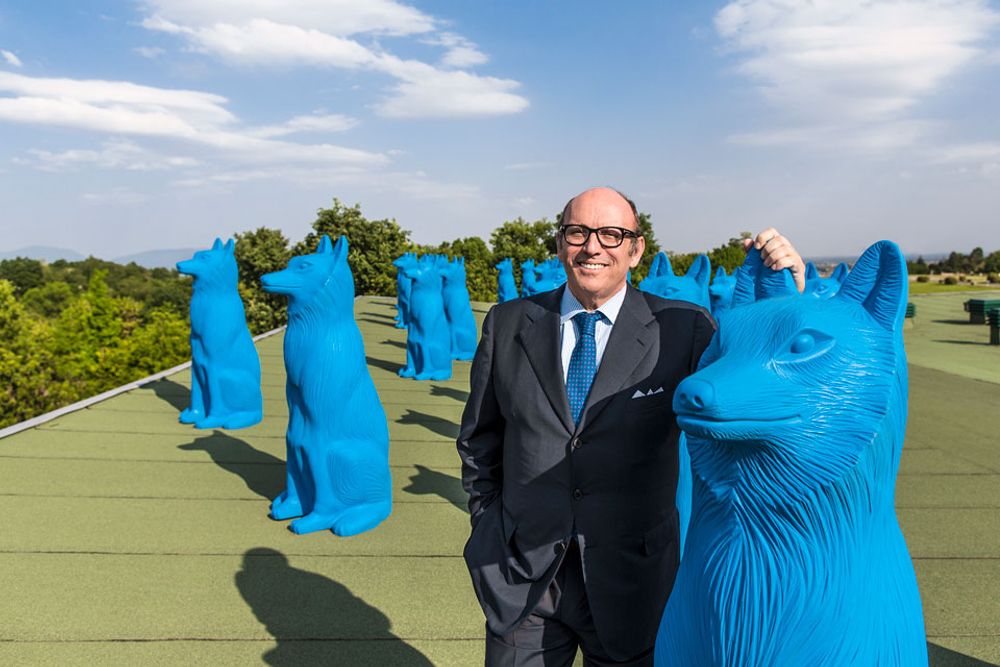
Maurizio Tanella, founder of Ca Del Bosco with an art installation at the winery
Over at Ca del Bosco, one of the region’s most iconic producers (imported here by Berkmann Wine Cellars), with the partial lifting of the lockdown, attention has switched to the next stage.
“Now we are focused on restarting daily activities and restoring services with all the precautions necessary for us and our customers,” says Maurizio Zanella, who founded CdB back in the late 1960s when he was 18 years old.
Fortunate to have elevation for its vineyards, which include the highest in the region, quality is very much the driving force here with Zanella seeing it as its USP once conditions start to improve.
“We cultivate 245 hectares and thanks to some of the best soils we can secure the best grapes. In the last few years we acquired new vineyards, at different altitudes, so we are able to enhance different nuances in our wine,” he says, pointing out that these give flexibility including on whether to delay bud break and harvest.

Ettore Maggi, international area manager for Terra Moretti Wines which includes Bellavista (probably Franciacorta’s biggest producer with around 1.5m bottles and imported here by Liberty Wines) says vineyard quality is its USP.
“Bellavista has 200 ha of vineyards strategically planted all over Franciacorta. In a good vintage we are able to produce about 150 wines, all coming from fragments of vineyards, kept separated and used for what each of them can offer. That could be structure, that could be fruit character, acidity, body, persistency…. These single wines are then masterfully blended in cuvees of remarkable consistence and precise style, the Bellavista Style,” he says.
Going forward, Franciacorta producers face big questions over the longer term including whether to increase the use of the local, late-ripening variety Erbamat, since the Consorzio green-lighted this back in 2017, whose use can ameliorate the impact of global warming on the harvest.
In the short term, however, the focus will be on dealing with the grim impact of Covid-19 as attention switches from the human to the economic costs of the pandemic. With on-trade sales flatlined, and options for boosting off-trade sales restricted by the high price of most Franciacorta wines – unlike Champagne, affordable Franciacorta is pretty scarce – this is no easy matter, and likely to be made harder by the coming recession at home and in key export markets like the US and UK.
Maggi argues that Franciacorta needs to increase from the current 20% the proportion of sales that go abroad.
“We need to (to boost) territorial identity and consumer recognition (of Franciacorta) as a valuable alternative to other classic sparkling wines,” he says.
For Zanella, going forward the focus must be on cooperation.
“We are supporting our Italian clients pointing out if they are offering delivery or take away. This could be a good opportunity for other markets,” he says.
“Over the past 30 years we grew as a wine region and as a quality wine. We need to continue on this path, respecting what we’ve achieved and facing global changes together.”
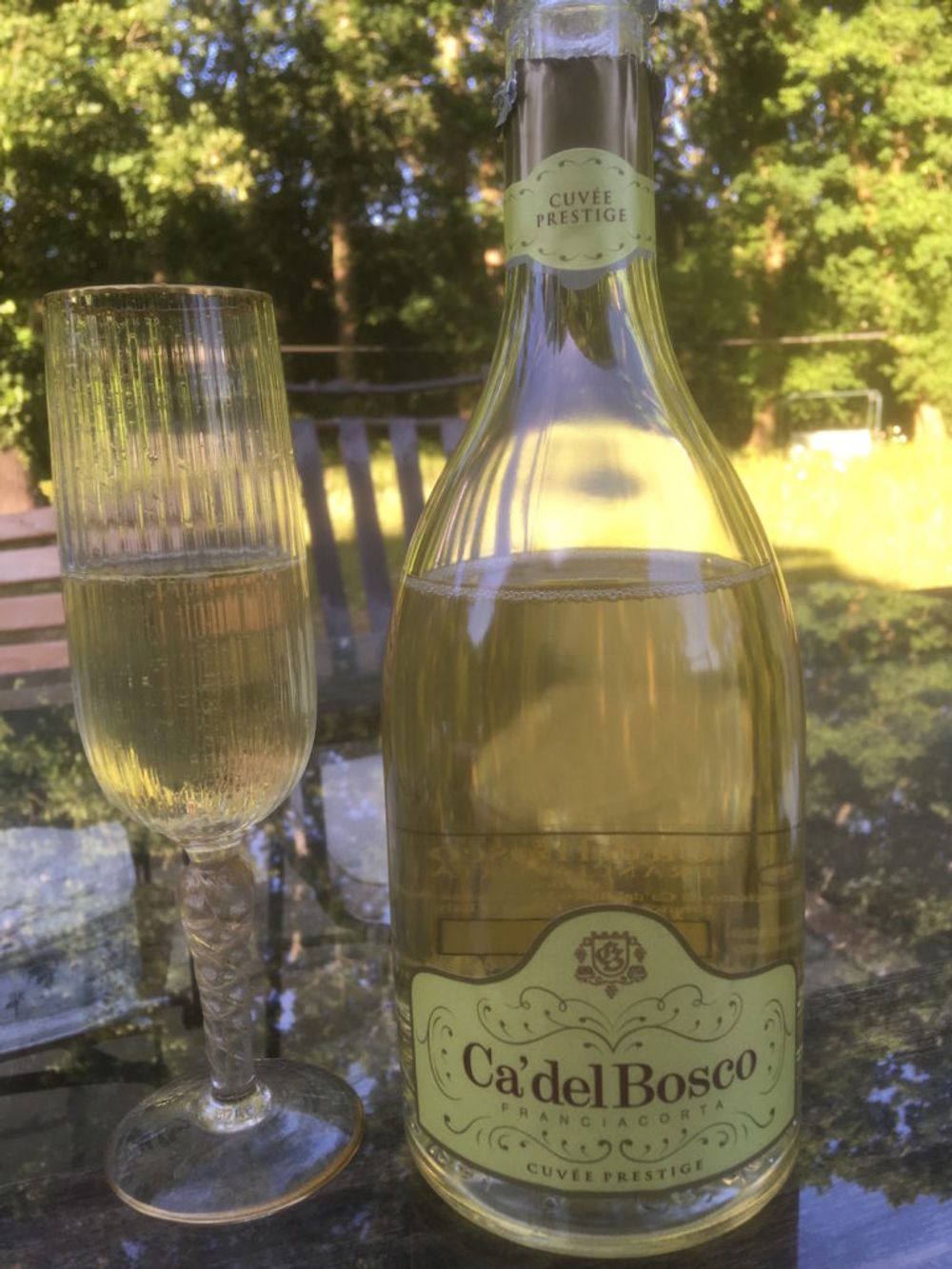
Six of the Best Franciacorta tried and tasted
As Lombardy struggles to get back to normality, and Franciacorta winemakers grapple with unprecedented challenges, UK consumers could do their bit by taking a closer look at some of the region’s best known wines.
Cuvée Prestige, Ca del Bosco According to the CdB website, the grapes for this sumptuous wine are carefully pre-selected from across the estate’s vineyards “before visiting a berry spa, an exclusive washing and jet spray system that incorporates three soaking vats and a drying tunnel.” Whatever: this is a moreish classic you won’t be able to stop drinking. (Berkmann Wine Cellars, available through www.help4hospitality.co.uk).
Vintage Collection Brut 2014, Ca del Bosco A full bodied vintage take on the classic Franciacorta blend, this is 55% Chardonnay, 15% Pinot Bianco and 30% Pinot Nero. Beautifully rich, the wine spends four years on the lees and the result is a perfectly balanced, rounded and fruit-driven wine with lots of character.
Alma Gran Cuvee NV, Bellavista Made by blending up to 60 different wines every year, 90% Chardonnay and 10% PN and PM, this flagship has been described as the finest entry level wine in Italy, though with a RRP of around £30, that’s stretching the concept a bit. Deliciously rounded, small bubbles and the right amount of fizz, this is spot on. (Liberty Wines)
Brut 2015, Bellavista Made from 75% Chardonnay and 25% Pinot Nero, this deliciously rounded but well balanced wine spent four years on the lees after blending and bottling (with 30% aged for 7 months in small oak barrels and the rest in stainless steel). A classic, fully deserving its reputation.
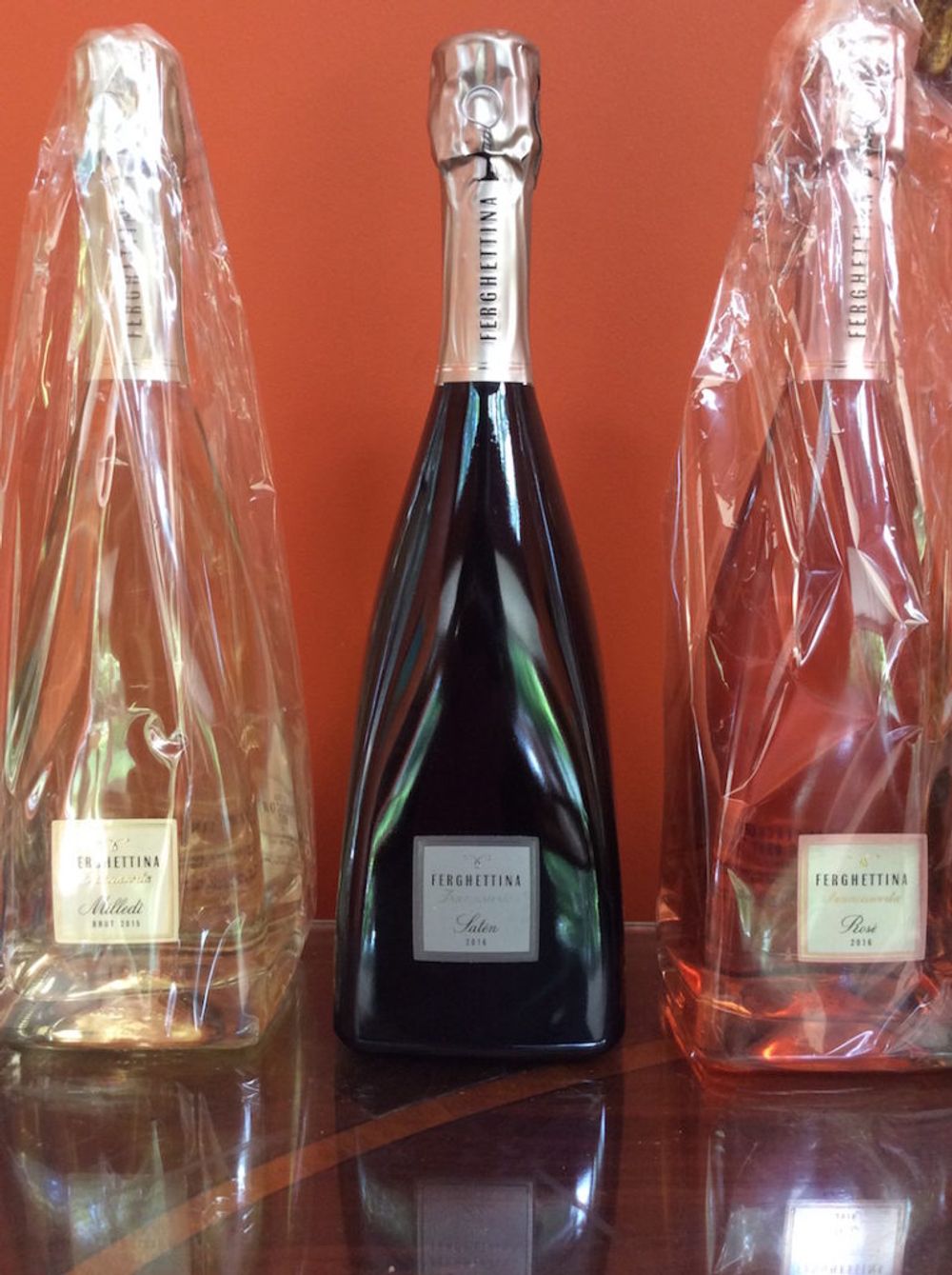
Saten 2016, Ferghettina The biggest challenge here is bringing yourself to open the beautiful pyramid shaped bottles, developed by owner and producer Roberto Gatti to maximise the wine’s development. This Saten is a wonderfully aromatic, herb-laced wine with lots of character. A classic. (Boutinot)
Milledi 2015, Ferghettina As the name suggests, this wine stayed on the lees for 1000 days and the result is a wonderfully rich 100% Chardonnay. Good value by Franciacorta standards.
